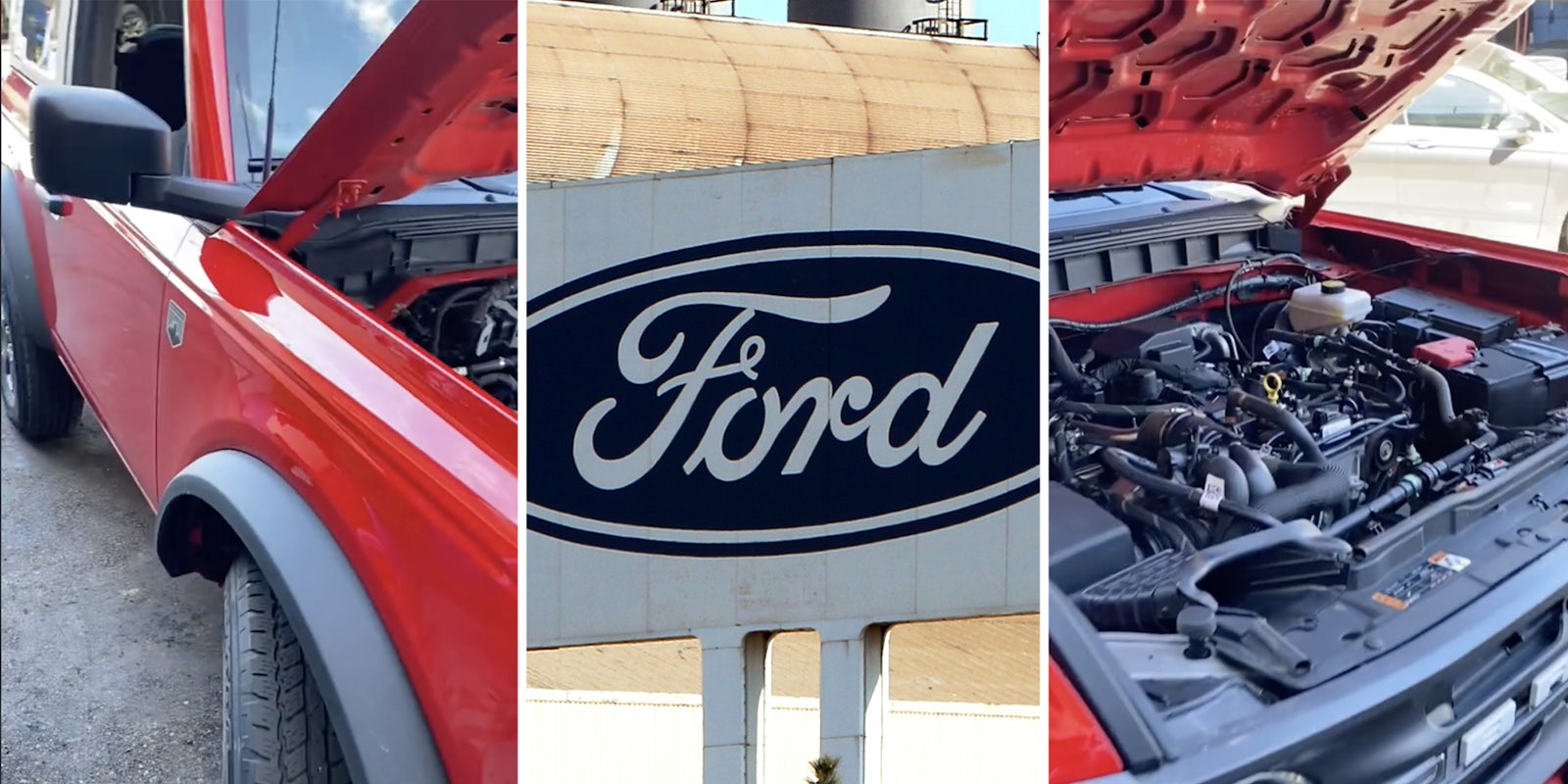In a revealing TikTok clip that has amassed over a million views, Cesar (@fordfrenzy), a mechanic, uncovers a concerning issue with a late-model 2.3-liter Ford Bronco. Despite having only 17,000 miles on it, the vehicle exhibits alarming signs of seizing and knocking. Cesar’s 16-second video shows the mechanical woes affecting one of Ford’s iconic models, highlighting Ford’s need for immediate attention and action.
The 2.3L engine problems in the Ford Bronco, highlighted by Cesar’s viral TikTok, shine a spotlight on a critical issue—seizing and knocking in engines with startlingly low mileage.
This malfunction jeopardizes the vehicle’s performance and poses safety risks to its occupants. Ford’s acknowledgment through the Customer Satisfaction Program 23B08, targeting a specific range of build dates for replacement, underscores the gravity of the defect. This scenario is particularly disheartening for owners and enthusiasts of the Bronco, as it tarnishes the reliability of a vehicle celebrated for its durability and off-road prowess. The urgent call for engine replacements in vehicles barely broken in illustrates a significant oversight in the manufacturing process, demanding rigorous scrutiny and immediate rectification to restore confidence in the Bronco’s performance and reliability.
“Ford brought back the steam engine?” joked one commenter. Jokes kept coming: “Fords doing away with navigation- you can look out the windshield and see how far you’re gonna get.” Another wondered, “But did they keep up with oil changes?”
Ford’s Customer Satisfaction Program 23B08 addresses engine replacements for specific 2023 models, including the 2.3L Broncos, signifying a broader concern within the lineup.
Dealers were directed to repair all affected vehicles upon arrival, regardless of customer notification. The issue stems from a machining tool error, leading to an improperly sealed main oil galley plug in the four-cylinder turbo engine. This defect can cause oil leaks, heightening the risk of engine failure and potential fires. The program, effective through March 31, 2024, with no mileage limit, underscored Ford’s acknowledgment of the severity of the situation. However, the program’s necessity casts a shadow on the reliability of these celebrated vehicles.
The 2.3L EcoBoost engines, pivotal to the Bronco’s performance, are not alone in their problems. The 2021 and 2022 models with the 2.7L EcoBoost V6 engines have also been scrutinized for similar, if not more severe, issues. Owners have reported total engine failure, a nightmare scenario for any car enthusiast or everyday driver. Such widespread problems across different engine types within the Bronco lineup raise questions about these vehicles’ long-term reliability and integrity.
Ford’s initiative to address these concerns through the Customer Satisfaction Program is a step in the right direction, yet it also highlights a significant challenge. Replacing an engine is no small task and certainly not an expected requirement for a vehicle with such low mileage. This situation inconveniences the owners and impacts Ford’s reputation for quality and reliability.
@fordfrenzy #fordproblems#knocking#siezingup#ford#bronco#fordtrucks#fordbronco#warranty#2.3t#fordtechlife ♬ original sound – fordtechcesar
As Ford navigates through these turbulent waters, the automotive community watches closely. The outcome of the Customer Satisfaction Program and the resolution of the Bronco’s engine issues will be critical in determining the future of this storied model. For now, Cesar’s video is a cautionary tale for potential buyers and a call to action for Ford to uphold the high standards that the Bronco and its drivers deserve.
The Daily Dot contacted Cesar via TikTok comment, and Ford via email.


